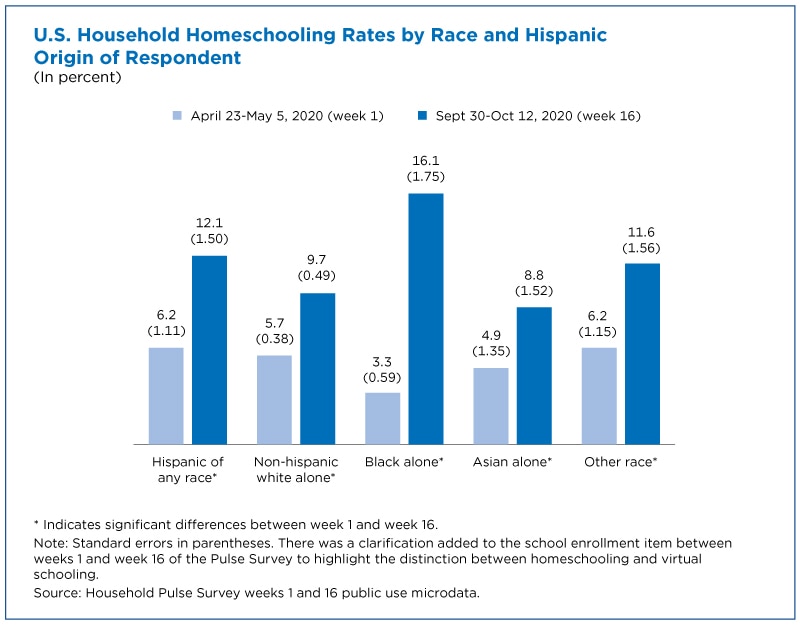More Than 11% of Students in the U.S. are Homeschooled
The U.S. Census Bureau Household Pulse Survey has found that the number of homeschoolers has increased sharply to 5 million students. In April of 2020, 5.4% of U.S. households with school-age children reported that they were homeschooling. By fall 2020, that number had jumped to 11.1%. This represents true homeschooling and does not include numbers for children who were at home enrolled in virtual school.

Homeschool Groups Growing Rapidly
Homeschool groups and co-ops are reporting increased interest in their programs and some are even reporting that there is a waitlist for families who want to join. Traditional homeschooling, which has used similar methods to those used in public or private schools, is being joined by a variety of new homeschooling philosophies. The pandemic has seen the creation of “learning pods” where families who live near each other have their children attend “classes” in one of the homes, where the instruction may come from one or multiple parents. Some families adopt a less structured, or “unschooled” child-led approach to homeschooling. Some choose a hybrid structure called the University Model, where students attend a private school for 2 or 3 days a week, and then complete schoolwork at home, under the supervision of their parents.
Many parents admit that they are “making it up as we go” in order to find the model that works best for their child. The goal is to keep the child engaged and learning, and measure success by their performance on state-required standardized tests.
A Response to the Pandemic Provides New Opportunities
Many of the families who have chosen to opt out of traditional schools and begin homeschooling have done so as a response to the pandemic, and the forced virtual school they were suddenly faced with. Parents were able to witness firsthand what their child’s school day was like, and many parents saw their children falling behind in academics they used to be able to master.
“Homeschooling became a viable alternative for many parents who had considered it in the past or who were curious but never prompted to change,” William Heuer and William Donovan, authors of a new study on the shift, said in a summary of the Census Bureau’s research.
Parents have been concerned about many issues, including exposure to COVID-19, the lack of social contact, the concern over what was being taught at their child’s school, and the new rules and restrictions being put in place in order to return to in-person school.
Even working parents are finding ways to homeschool. Parents who have the option to work from home find that it can fit pretty seamlessly into their day. Some parents who have flexible work hours spend a half day with homeschooling, and then go to work. And some parents who have the option, bring their child to work with them and provide learning activities throughout the day while also teaching their child about their work.
Now That In-Person School Has Resumed, Are Homeschoolers Going Back to School?
It seemed reasonable to assume that a percentage of homeschoolers would choose to send their kids back to school this fall when schools reopened for in-person classes. So far, it’s not clear that this is happening. In Los Angeles public schools, for example, have actually seen a larger public school enrollment drop this fall compared to last fall.
The controversial mandates regarding COVID-19 vaccinations are almost certainly going to affect enrollment numbers. The governor of California has announced that all students in the state would be required to get the vaccine, and homeschooling may be the option that parents will choose who are reluctant to vaccinate their children.
The Chicago public school districts are also reporting that enrollment is down this year and local Catholic schools and other private schools are seeing boosts in enrollment. Seattle and West Virginia are reporting enrollment declines as well.
A Side Effect of Dwindling Public School Enrollment
School districts receive funding based on how many students are enrolled and attending school, so the drop in enrollment means a drop in funding. Last year school funding was frozen at the 2019/2020 spending level, but this school year funding will be based on actual headcount. And while fewer students should mean that less funding is required, it’s always difficult to adjust to a reduced budget.
The exodus from public schools can mean a positive educational change for families who have expanded choices and learning opportunities. The increase in homeschooling is evidence of the desire for change.
Homeschooling Parents Need Support
In addition to joining groups, co-ops, pods and other support groups, homeschooling parents are increasingly turning to tutoring to help fill gaps. While it may not be necessary or desirable to enroll their child in a part-time private school to help bolster the homeschooling curriculum, a once-a-week or twice-a-week tutoring session with a certified teacher can be a viable option.
You can find some local homeschool support groups here:
Home School Legal Defense Association
Search online for “homeschool support groups near me” and you’ll find many local resources.

